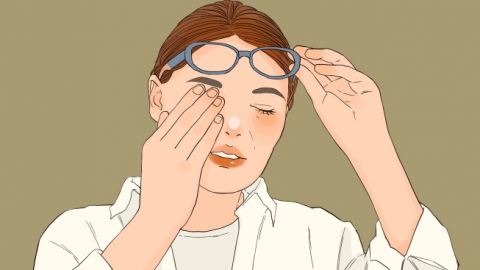What causes eye pain?
Eye pain may be caused by excessive eye use, improper wearing of contact lenses, conjunctivitis, glaucoma, keratitis, and other conditions, and management can be tailored according to different situations. If discomfort occurs, it is recommended to seek medical attention promptly and receive treatment as directed by a physician.

1. Excessive Eye Use: Prolonged use of electronic devices, reading, driving, or other activities that involve extended periods of eye usage can lead to reduced blinking and insufficient eye rest, resulting in eye pain. It is recommended to take regular breaks, rest the eyes for 5–10 minutes after every 45–60 minutes of work, look into the distance or close the eyes to relax, and maintain ocular surface moisture to alleviate eye fatigue and pain.
2. Improper Use of Contact Lenses: Prolonged wearing of contact lenses, inadequate cleaning, or using inappropriate lenses can easily lead to eye hypoxia and bacterial growth, causing eye pain. It is recommended to strictly follow proper methods for wearing and caring for contact lenses, with daily wearing time not exceeding 8 hours.
3. Conjunctivitis: Bacterial or viral infections, allergies, or other factors may cause inflammation of the conjunctiva. Patients may experience redness, pain, foreign body sensation, and increased secretions. For bacterial infections, patients may use ofloxacin eye drops, tobramycin eye drops, erythromycin ointment, and other medications under a physician's guidance to promote recovery.
4. Glaucoma: Obstruction of aqueous humor circulation within the eye may lead to elevated intraocular pressure, damaging the optic nerve. Patients may feel eye pain and pressure, often accompanied by headache, blurred vision, nausea, and vomiting. It is recommended to use brinzolamide eye drops, timolol maleate eye drops, brimonidine tartrate eye drops, and other medications under a physician's guidance to relieve discomfort.
5. Keratitis: Often caused by infection following corneal injury or autoimmune diseases affecting the cornea, leading to inflammation. Patients may experience severe eye pain, photophobia, tearing, and vision loss. Symptoms may be improved by using recombinant bovine basic fibroblast growth factor eye drops, fluconazole eye drops, cefixime capsules, and other medications as directed by a physician.
In daily life, avoid direct exposure to intense sunlight and wear sunglasses to protect the eyes; ensure adequate lighting when reading and avoid using the eyes in dimly lit environments.
References:
[1] Peng Mei, Zhang Yanfang, Liu Lu, et al. Clinical Observation of Shufeng Jiedu Capsules as Adjunctive Treatment for Measles-Induced Keratoconjunctivitis. Journal of Practical Traditional Chinese Medicine, 2024, 40(12): 2504–2506.
[2] Zhang Xin, Ren Jie, Tang Li. Research Progress on Self-Management Behaviors in Patients with Glaucoma. Journal of Clinical Medicine in Practice, 2025, 29(04): 139–143.





